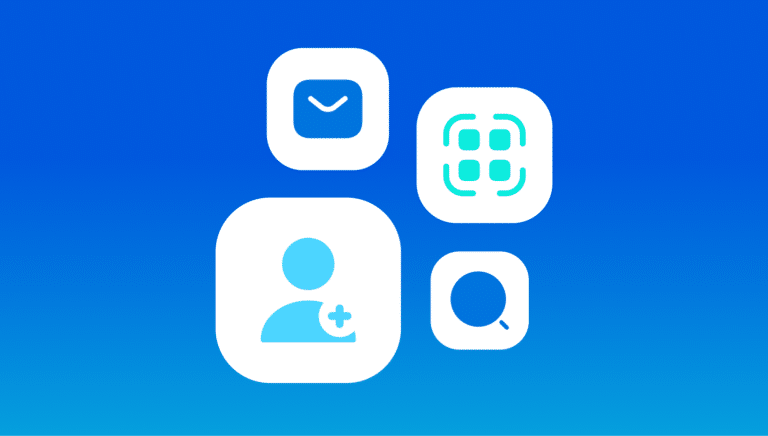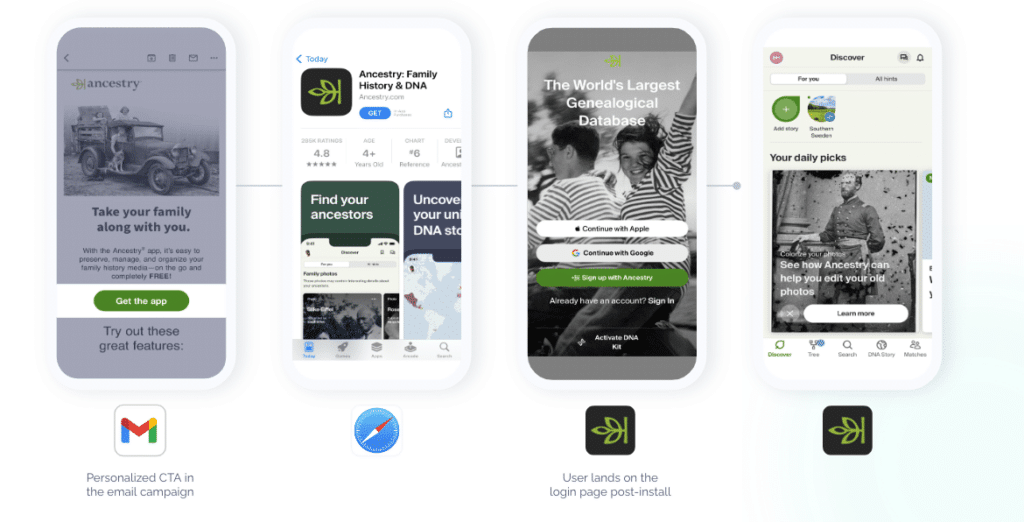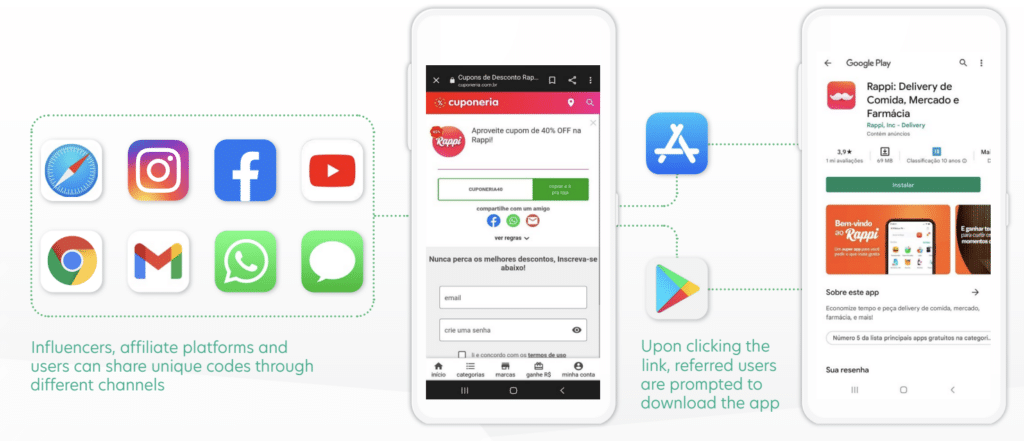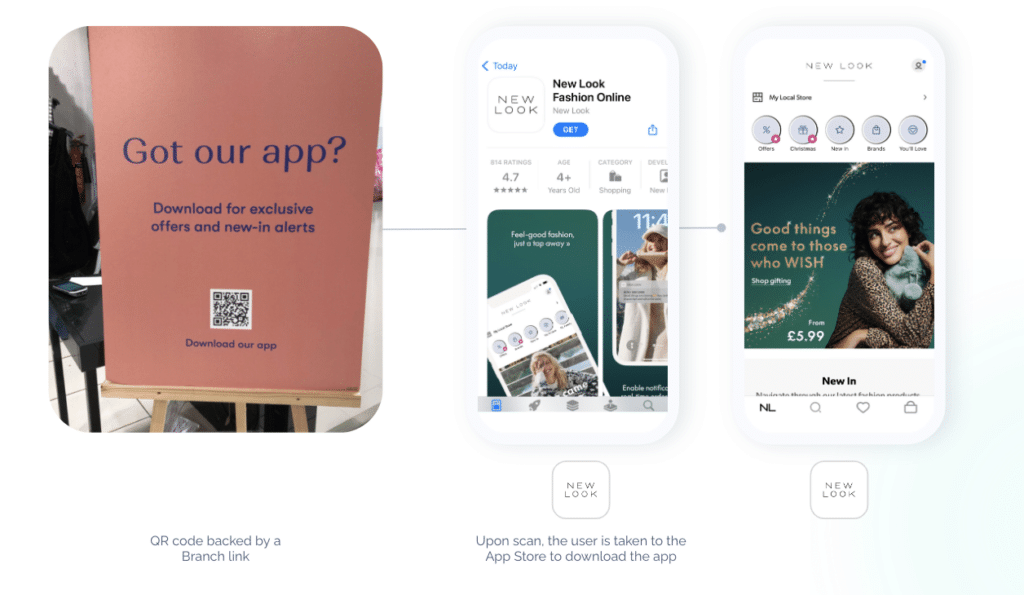In today’s mobile landscape, having a robust mobile app marketing strategy is crucial to drive app downloads and retain users. With over 5.7 million mobile apps available to consumers between Google Play, Apple App Store, and Amazon Appstore, it’s not enough to create an engaging app, list it in an app store, and hope users find it.
The majority (70%) of digital media consumption happens on mobile devices, so it’s no surprise that brands are doubling down on their app marketing efforts. When done right, app marketing yields higher conversion rates, improved advertising ROI, and increased customer lifetime value (LTV). App user acquisition and engagement also have significant bottom-line impact: Branch’s Mobile Growth survey found that app users are over three times more valuable than non-app users — and they’re less likely to churn.
Standing out from the competition starts with understanding your unique value proposition and core messaging, target audience (and their expectations and behaviors), and desired outcomes. Then, leverage owned, earned, and paid channels to promote your mobile app — all while providing seamless, omni-channel experiences. It sounds like a tall order, but with a strategic approach, you can turn potential users into loyal customers.
Here are four mobile app marketing strategies to grow your app:
- Improve email marketing engagement with deferred deep links
- Tap into new audiences through referral programs and influencers
- Drive growth from online and offline channels with QR codes
- Improve your app visibility with app store optimization
Use deferred deep links to improve email marketing engagement
Email marketing remains a powerful tool for app marketers: 63% of Mobile Growth survey respondents say they leverage it to acquire new app users. Yet conversion rates drop when users hit roadblocks on the path from email CTAs to the intended content. With deferred deep linking, brands can guarantee that email clicks take users directly to the content they expect within the app and increase app downloads. For example, when a mobile user clicks an email call-to-action (CTA) link to open an app they don’t yet have downloaded, a deferred deep link will take them to the app store to download it, then directly to the desired app page. For users that have the app already, a link click will direct them to the app page rather than a mobile web landing page.
Ancestry®, a family history and consumer genomics company, used Branch’s Universal Email product to create a seamless, cross-platform experience and drive app user acquisition from email. As a result, the company saw a 44% increase in app opens and 3x increase in app feature engagement.
Tap into new audiences through referral programs and influencers
Growing your mobile app user base means reaching new audiences — ones that aren’t likely to see your email or social media marketing campaigns. Referral programs and word-of-mouth marketing are among the most surefire ways to gain new users and build social proof. By offering incentives to your already active and loyal customers to share your app with their peers, you can turn your mobile app into a user acquisition channel.
Another way to extend your reach is by partnering with digital creators on social media channels. The influencer marketing economy has more than doubled since 2019, prompting brands to tap into the social media followings of celebrities and micro-influencers alike. Functionality like deferred deep linking also helps maximize the potential of these influencer app promotions and brand awareness campaigns. Removing friction and improving the experience of getting users from a social media platform to your app will increase app downloads.
Rappi, a Columbian multi-vertical company, incorporated Branch deep links into its campaign strategy and saw over 50 million total app installs and an average of 50% of new users coming from influencers and referral campaigns.
Drive growth from online and offline channels with QR codes
QR (quick response) codes have become ubiquitous. One recent study projected that mobile QR code scanner usage will reach over 100 million users in the U.S. by 2025. By making QR codes available and convenient for consumers in their digital and physical environments (stores, mailers, menus, etc.), brands can incentivize users to download their mobile app. Special offers, discounts, and loyalty programs all nudge users to tap “install” and boost user engagement and retention.
Yet not all QR codes are created equal. To optimize your app marketing strategy, make sure your QR codes use deep linking to take users to the right content on the right channel. With Branch’s QR codes, omni-channel e-commerce company New Look created a seamless experience for its in-store customers. The company promoted its app via 400+ unique QR codes located in each of its stores, resulting in a 113% increase in app downloads and 239% increase in app engagement.
Improve your app visibility with app store optimization
With 40% of smartphone users browsing the Google Play Store or Apple App Store to find new apps, it’s important to make your app easy to discover and download — and algorithm-friendly. App store optimization (ASO) focuses on improving key app components like title, description, app icon, visuals, app reviews and ratings, and keywords to increase its visibility in search results. Like mobile search engine optimization (SEO), ASO is an art and a science. Total downloads also impact app rankings, so optimizing the previously-mentioned channels will promote better results on both iOS and Android.
For expert tips on achieving a top-ranking position in app store search results, tune into our on-demand webinar, Mobile Growth Knowledge Series: App Store Optimization.
A comprehensive app marketing strategy is essential for marketers and app developers to drive downloads, engage users, and increase revenue. For more examples of app marketing in action, read our guide.
To learn more about how Branch can support your app growth, request a demo with our team.




